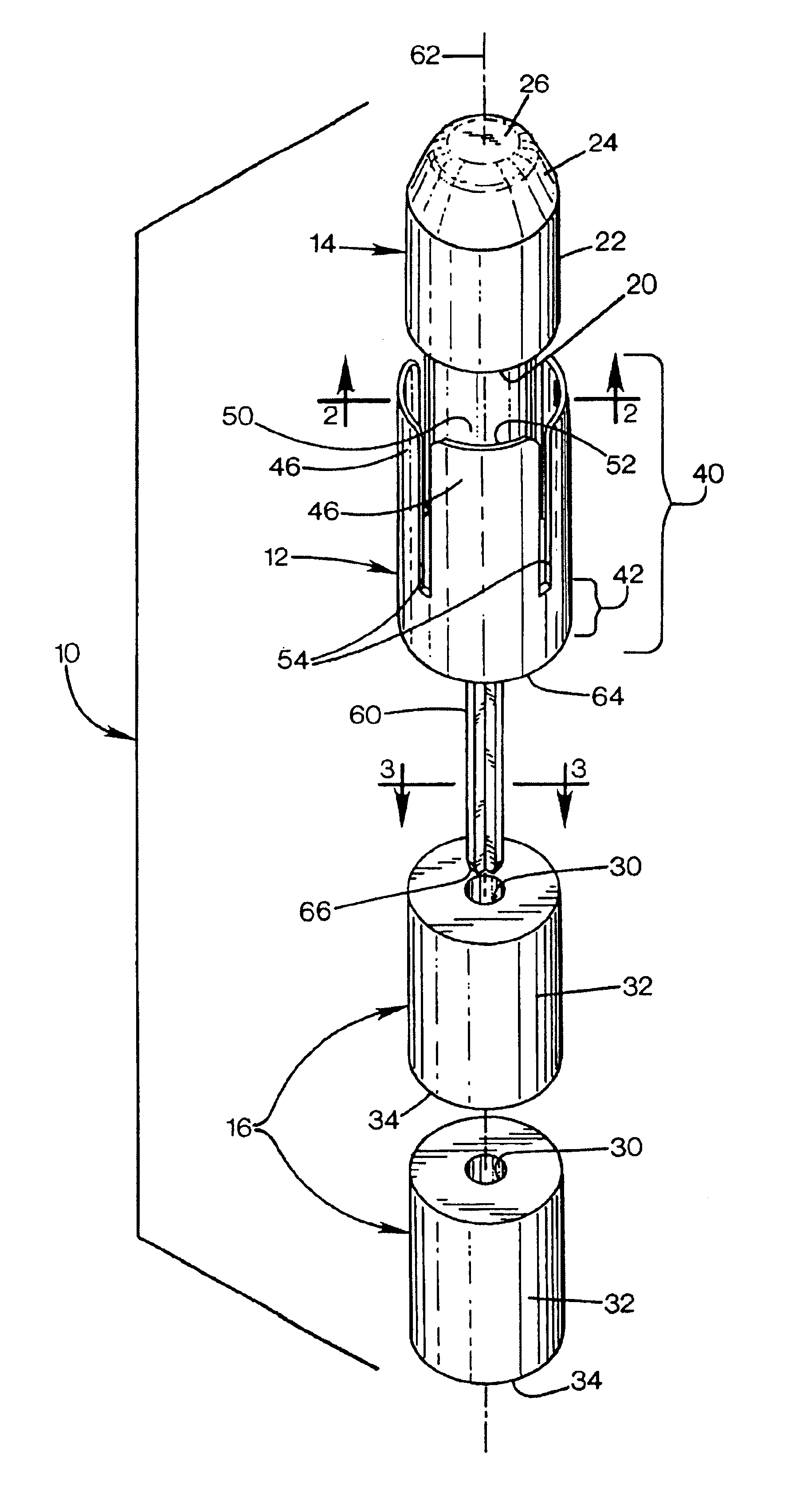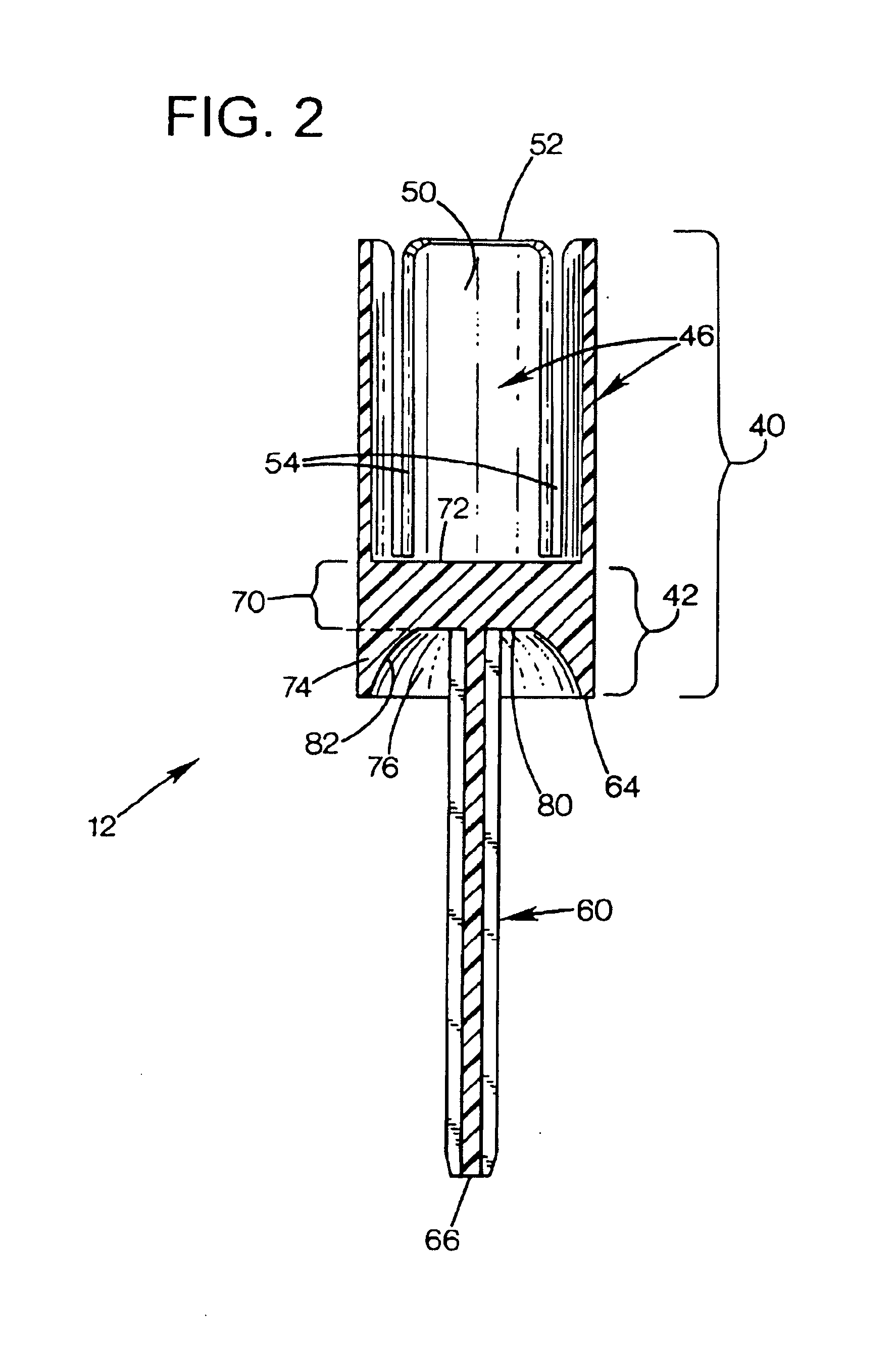Sabot for muzzleloading firearm
a technology for muzzleloading firearms and sabots, which is applied in the field of sabots, can solve the problems of difficult to extract pellets by hand, require unwanted force, and force force to force the bullet to deform, and achieve the effects of convenient and carefully sized, convenient insertion of the bullet with minimal friction and force, and easy deformation
- Summary
- Abstract
- Description
- Claims
- Application Information
AI Technical Summary
Benefits of technology
Problems solved by technology
Method used
Image
Examples
Embodiment Construction
[0013]FIG. 1 shows a sabot assembly 10 that includes a sabot 12, a bullet 14, and a pair of cylindrical powder pellets 16.
[0014]In the illustrated embodiment, which is sized for a 0.50 caliber muzzleloading rifle, the bullet 14 is 0.45 caliber (0.452 inch diameter), for example a handgun bullet such as model XTP available from Hornady Manufacturing Company. The bullet has a flat base 20, a cylindrical side wall 22 extending from the base, and a tapered portion 24 terminating in a nose 26. The length of the bullet will vary with the selected profile and weight, for a given caliber. In the illustrated embodiment, a 300 grain bullet has an overall length of 0.777 inch. (Such dimensional details are provided herein to illustrate a preferred and alternative embodiments, and are not intended as limitations on the claims that define the scope of the invention.)
[0015]The powder pellets 16 are solid cylindrical bodies formed of gunpowder. In the example of the preferred embodiment, the pelle...
PUM
 Login to View More
Login to View More Abstract
Description
Claims
Application Information
 Login to View More
Login to View More - R&D
- Intellectual Property
- Life Sciences
- Materials
- Tech Scout
- Unparalleled Data Quality
- Higher Quality Content
- 60% Fewer Hallucinations
Browse by: Latest US Patents, China's latest patents, Technical Efficacy Thesaurus, Application Domain, Technology Topic, Popular Technical Reports.
© 2025 PatSnap. All rights reserved.Legal|Privacy policy|Modern Slavery Act Transparency Statement|Sitemap|About US| Contact US: help@patsnap.com



